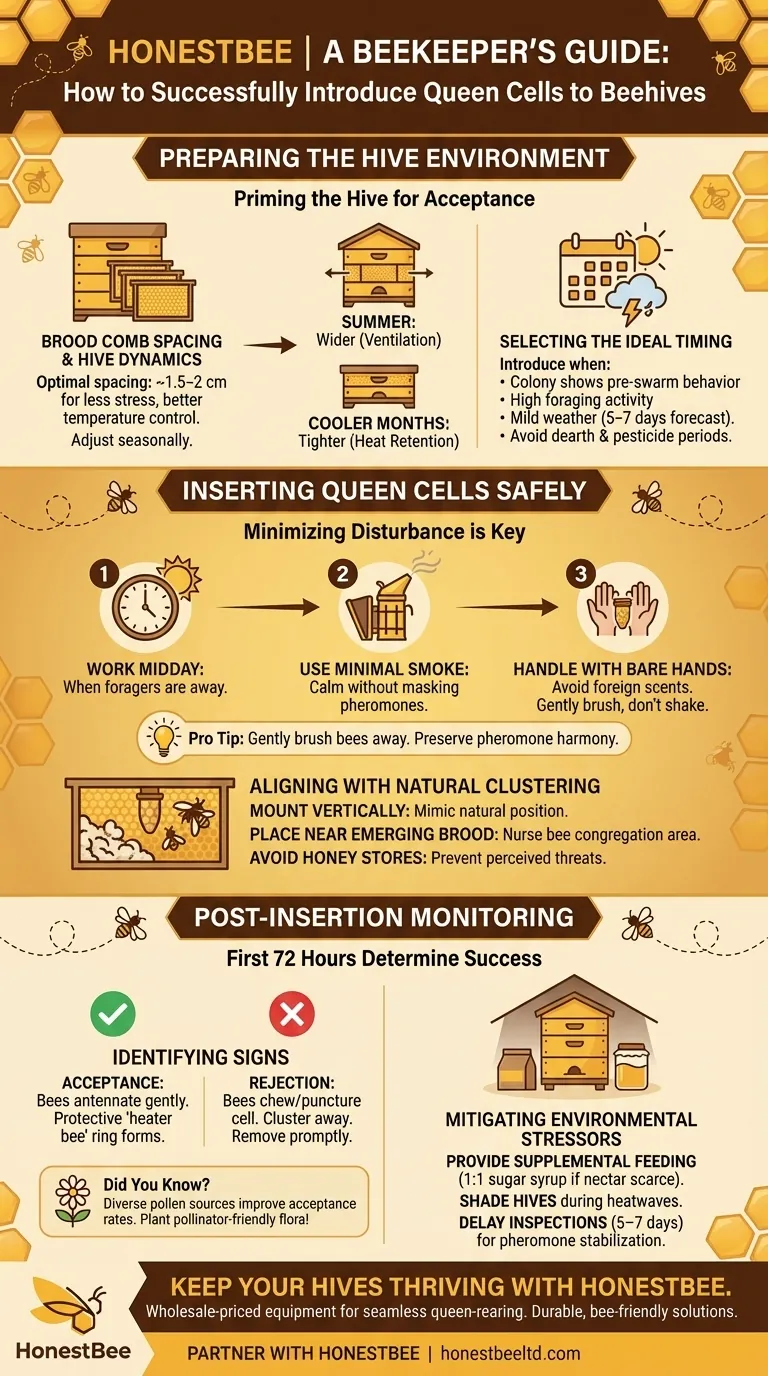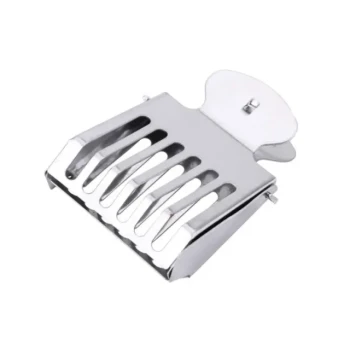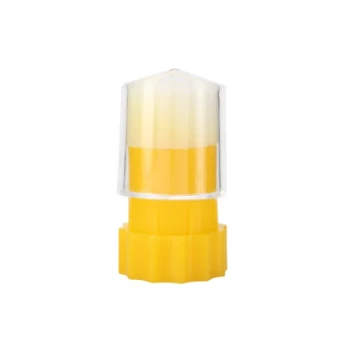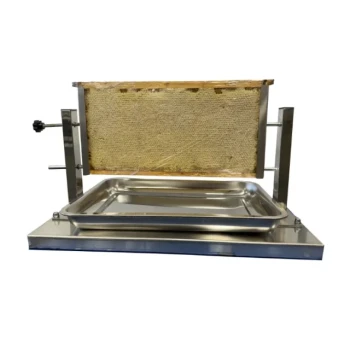For beekeepers, introducing queen cells into a hive is a delicate balancing act. Done correctly, it ensures colony continuity and productivity. Done poorly, it can lead to rejection, weakened hives, or even colony collapse. This guide provides actionable steps to integrate queen cells safely while minimizing risks—helping you maintain thriving apiaries with confidence.
Preparing the Hive Environment
Successful queen cell integration begins long before the cell is placed. The hive must be primed to accept new leadership.
Brood Comb Spacing and Hive Dynamics
Bees are highly sensitive to spatial organization. Research shows colonies with well-spaced brood combs (approximately 1.5–2 cm apart) exhibit less stress during queen transitions. This spacing:
- Reduces congestion, allowing nurse bees to tend to the queen cell efficiently
- Mimics natural hive layouts, which bees instinctively prefer
- Prevents overheating, a common cause of queen cell failure
Have you noticed how bees cluster differently during nectar flows versus dearth periods? Adjust comb spacing seasonally—wider in summer for ventilation, tighter in cooler months to retain heat.
Selecting the Ideal Timing for Insertion
Timing is critical. Introduce queen cells when:
- The colony shows pre-swarm behavior (e.g., queen cups or early-stage supersedure cells)
- Foraging activity is high (indicating strong colony health)
- Weather forecasts predict mild temperatures for 5–7 days post-insertion
Avoid periods of pesticide application or major nectar dearth, as stressed bees are more likely to reject new queens.
Inserting Queen Cells Safely
Even a perfectly timed introduction can fail if the cell is mishandled. Follow these steps to minimize disturbance.
Minimizing Bee Disturbance During Placement
Bees detect and react to abrupt changes. To reduce agitation:
- Work during midday when most foragers are away.
- Use minimal smoke—just enough to calm guard bees without masking queen pheromones.
- Handle cells with clean, bare hands (avoid gloves that carry foreign scents).
Pro Tip: Gently brush bees away from the target area instead of shaking frames. This preserves the colony’s pheromone harmony.
Aligning Cell Bars with Natural Bee Clustering
Bees cluster queen cells in specific zones (often near comb edges or between brood areas). Replicate this by:
- Mounting the cell vertically, just as bees would build it naturally
- Placing it near emerging brood, where nurse bees congregate
- Avoiding direct contact with honey stores (bees may perceive this as a threat)
Anecdotal evidence suggests acceptance rates improve when cells are placed near existing queen cups, even if empty.
Post-Insertion Monitoring
The first 72 hours determine success. Watch for these critical signs.
Identifying Signs of Acceptance or Rejection
- Acceptance: Bees gently antennate the cell and form a protective "heater bee" ring around it.
- Rejection: Bees chew or puncture the cell wall, or cluster away from it.
Rejection often stems from poor cell quality or hive instability. If detected, remove the cell promptly to prevent worker bees from developing laying-worker tendencies.
Mitigating Environmental Stressors
Even accepted queens face risks. Protect the colony by:
- Providing supplemental feeding (1:1 sugar syrup) if nectar is scarce
- Shading hives during heatwaves to prevent wax melting
- Delaying hive inspections for 5–7 days to allow pheromone stabilization
Did You Know? Colonies with access to diverse pollen sources show higher queen acceptance rates. Consider planting pollinator-friendly flora near apiaries.
Keep Your Hives Thriving with HONESTBEE
Integrating queen cells doesn’t have to be a gamble. By preparing the hive, handling cells thoughtfully, and monitoring diligently, you can boost survival rates and maintain robust colonies.
For beekeepers and distributors, HONESTBEE offers wholesale-priced equipment—from precision cell bars to hive tools—designed to support seamless queen-rearing workflows. Explore our durable, bee-friendly solutions to elevate your apiary’s success.
Ready to refine your queen-rearing process? Partner with HONESTBEE for supplies that match your expertise.
Visual Guide

Related Products
- Brown Nicot Queen Cell Cups for Breeding Queen Bees Beekeeping
- JZBZ Push-In Queen Cell Cups for Beekeeping
- JZBZ Type Wide Base Plastic Queen Cell Cups for Base Mounting and Queen Rearing
- JZBZ Langstroth Queen Rearing Frame for Beekeeping
- Professional Queen Catcher and Introduction Queen Cage
Related Articles
- The Art of Persuasion: Engineering the Perfect Conditions for Queen Rearing
- The Comprehensive Benefits of Beekeeping
- How Beekeepers Can Maximize Queen-Rearing Success with the JZBZ System
- How Jenter and Nicot Systems Revolutionize Queen Rearing Efficiency
- Mastering Queen Rearing: A Beekeeper’s Guide to Reliable Production


















